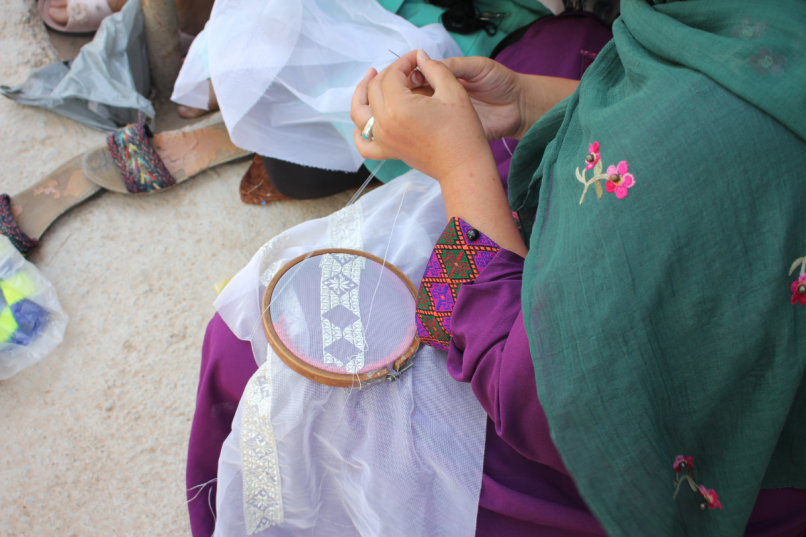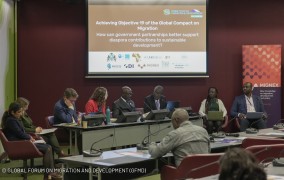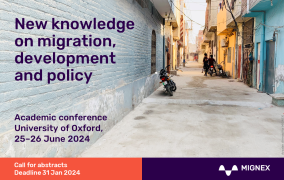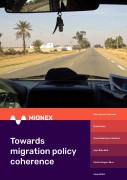MIGNEX Insight
Policy-makers must ensure the protection of Afghans, starting with the right to mobility – here’s how
A year after the fall of Kabul, there is still no sign of governance. International protection remains the only hope for the Afghan community. Yet progress has, and can be made.
Drawing on a recent MIGNEX publication - Migration-related policies in Afghanistan - we share five policy areas to chart a way forward.
Policy advances ‘on pause’
The world is watching a full-fledged attack on human rights in Afghanistan. International policy-makers are faced with urgent opportunities to support Afghans both inside and outside of Afghanistan.
Afghanistan made significant progress in the development of migration policies under the former Government of the Islamic Republic of Afghanistan (GoIRA). The twenty years that marked the period between the US-led 2001 intervention and the 2021 fall of Kabul saw migration policy coming to life, from scratch. Afghanistan began seeing a range of migration policy proposals: from outlets for safe, legal migration in Afghanistan to addressing forced displacement and planning for durable solutions. Neither the search for legal outlets nor durable solutions materialized, as policy advances stopped overnight on August 15, 2021.
Many policies have been “paused” – but remain relevant and necessary. Finding creative ways to now implement and finance them should be the focus of the international community, in support of Afghan men and women.
Since August 2021, the international community’s engagement with Afghanistan has been limited. Many programmes implemented under the former GoIRA have been abandoned or are now in limbo. This includes attempts to open up formal opportunities for labour migration, including the World Bank’s support to develop labour migration projects such as the Placing Labour Abroad and Connecting to Employment Domestically (PLACED), which has since August 2021 been dropped.
The Comprehensive Migration Policy for Afghanistan (CMP), drafted by the Government of Islamic Republic of Afghanistan (GoIRA) and The Comprehensive Migration Policy for Afghanistan (MoRR), was designed to help Afghanistan progress from short-term humanitarian response towards long-term migration and development governance; the CMP was never formally adopted.
Yet one year on, urgent action is needed to revive some of these initiatives. The demands for the variety of forms of migration that Afghanistan depended on before August 2021, have grown since. The collapse of the Afghan economy has resulted in widespread unemployment, and the withdrawal of foreign aid and military.
Even prior to the insurgency and fall of Kabul, many businesses in Afghanistan were struggling to stay afloat, starting with the COVID-19 pandemic and lockdown, which left businesses in vulnerable conditions amidst growing fears about regime change in 2021. There remain crucial opportunities for continued engagement on migration in Afghanistan.
Urgent opportunities remain
-
Inclusion of Afghan women in migration programmes and mobility schemes: While Afghans continue to migrate, women are those who pay the price and stay behind – often without support, remittances or livelihoods under a restrained social and economic space. There is a need specifically to re-assess and coordinate approaches for female-headed households, and those whose husbands, fathers, and brothers have migrated abroad, as restrictions on employment and movement have had devastating effects, especially for households where women are the primary or sole earners. Approaches to engage women under the restrictions imposed by the Taliban on movement, employment, and dress need to be developed to ensure that their voices are included and their specific vulnerabilities are responded to.
-
Afghans’ access to documentation and legal identity. Seeking protection abroad has become further complicated for Afghans in the wake of the departure of Western military and diplomatic personnel, as many Afghans now cannot leave the country legally, especially given restrictions posed on women procuring passports. Although regular visa pathways remain available to Afghans in theory, in practice, procuring documents authorizing travel has been ever more challenging due to Taliban checkpoints, closed consulates, and documents destroyed due to security concerns. Finally, the impact of sanctions means that the government may not be able to procure the paper needed to print more passports. At the time this piece is being drafted, in July 2022, one passport costs up to $9,000 to get in Kabul.
-
Universal pathways – Establishing a laissez-passer in lieu of travel documentation should be provided to facilitate Afghans’ human right to leave their country in the absence of formal documentation. Governments should waive visa requirements for Afghan nationals and implement emergency travel and identification documents that will prevent situations where newly arrived Afghan refugees and asylum seekers are stranded at airports as they wait for customs to verify their identities.
-
Emergency and humanitarian pathways– including Special Immigrant Visas (SIV), paths to protection provided by the Canadian government for interpreters, and the e-Emergency X-Misc visa introduced by the Indian government. However, these pathways are only available to Afghans with a passport – no countries have announced specific measures or pathways for those populations arriving without identification and documentation. This can be linked to establishing humanitarian corridors, which would involve the Taliban granting Afghans safe passage via an orderly departure programme.
-
Targeted advocacy related to easing of sanctions and financial restrictions, and facilitating the sending of remittances to support the country’s failing economy. Easing restrictions would foster a more equitable and widespread distribution of aid required by Afghan civilians. At the same time, development-conductive remittance and investment frameworks are still needed and can be supported by the diaspora. This goal was embedded in the CMP and still holds value today. There is still the possibility, linked to the Global Compact for Migration, to create conditions for Afghan migrants and diaspora to constitute a lifeline for Afghans and to develop their country.
Find out more
Evidence-based research will be critical for effective, fair migration solutions. You can explore MIGNEX work on Afghanistan, here:
‘Migration-related policies in Afghanistan’ provides an overview of the key migration policies in Afghanistan and its interaction with development and development policies. This paper shares progress made up until the change of government authorities in August 2021. It provides a broad overview and critical insights useful for policy-makers and practitioners working on migration and development issues in Afghanistan at present.
A Special Afghanistan issue for Migration Policy Practice reminds us of the many ways Afghans can be now assisted to access their rights and protection through migration. Our article Afghan women, migration and their future draws on MIGNEX fieldwork to share the challenges and uncertainty faced by Afghan women and girls since the Taliban takeover. It offers recommendations for the international community, humanitarian actors and diplomats to support women and girls in Afghanistan.




